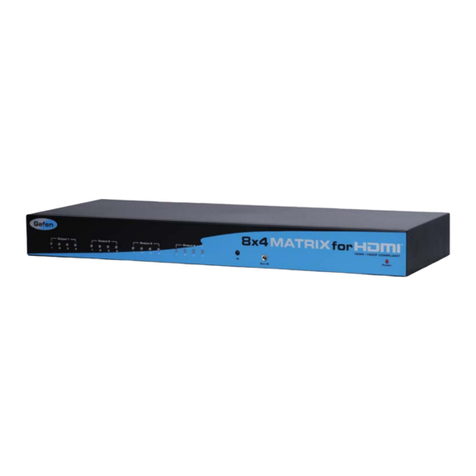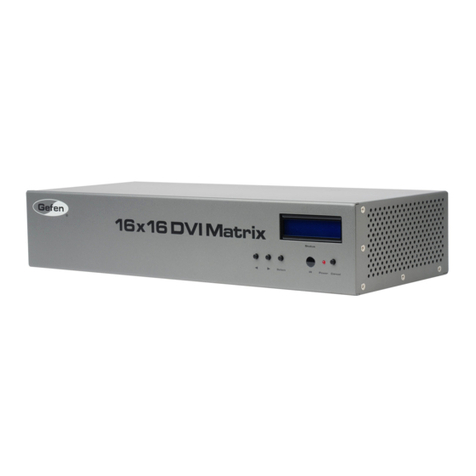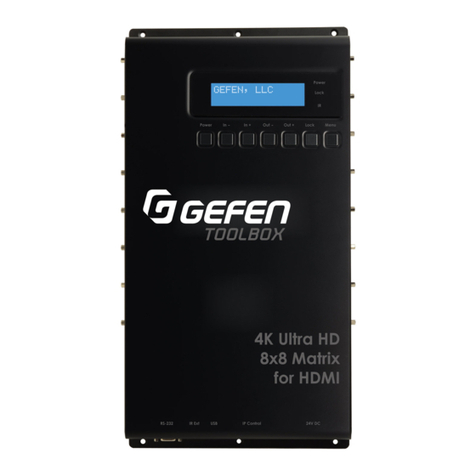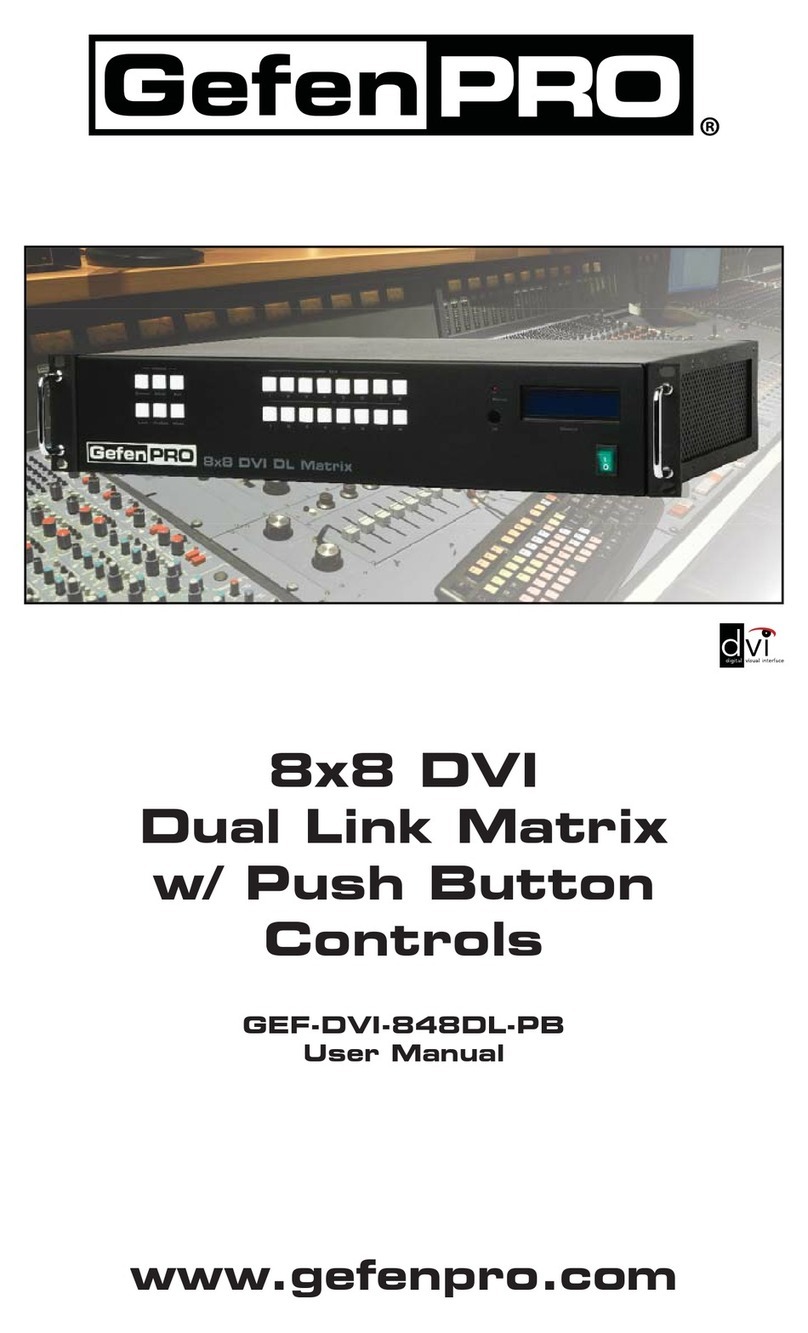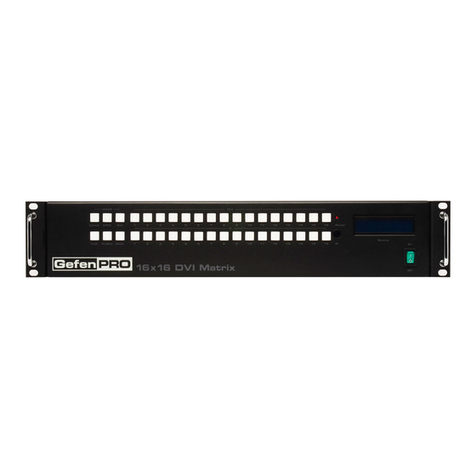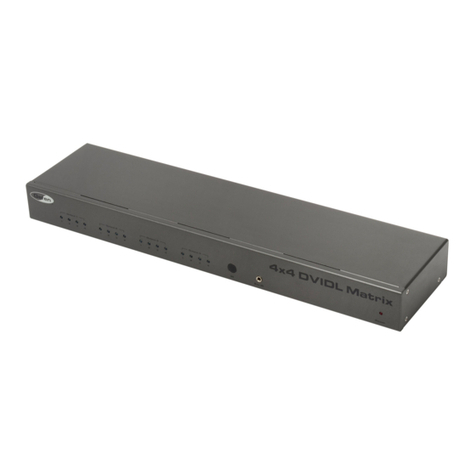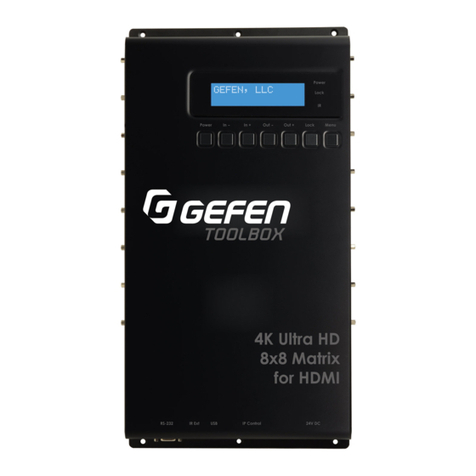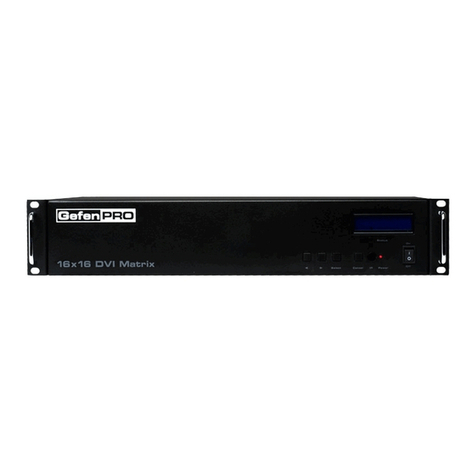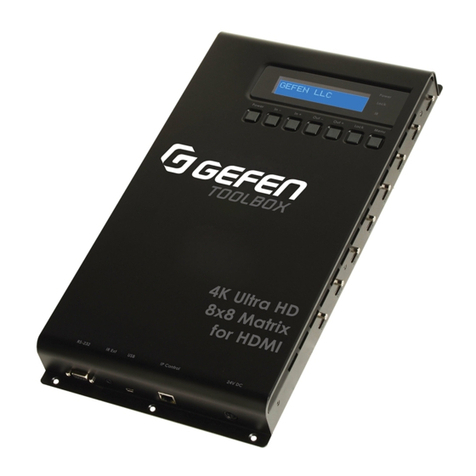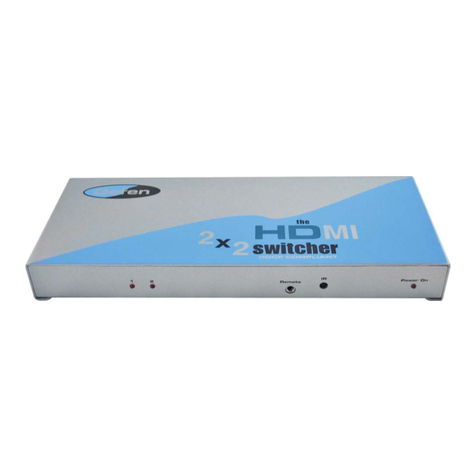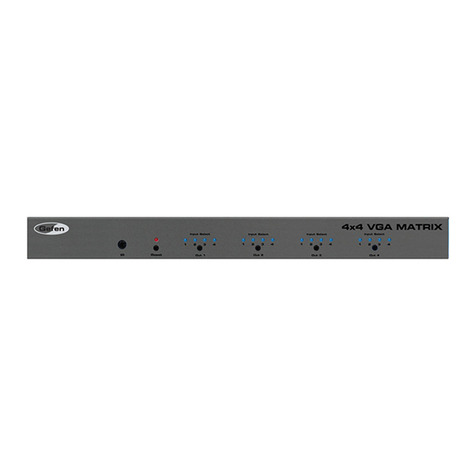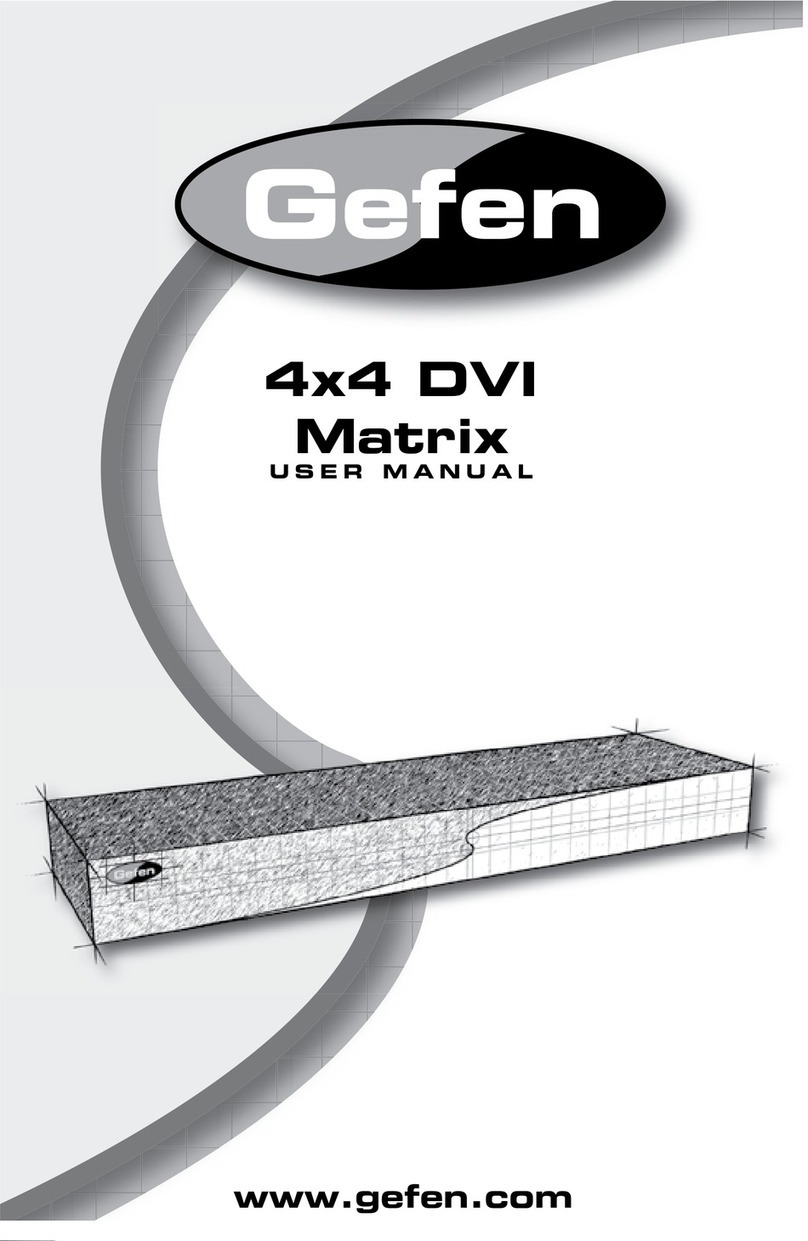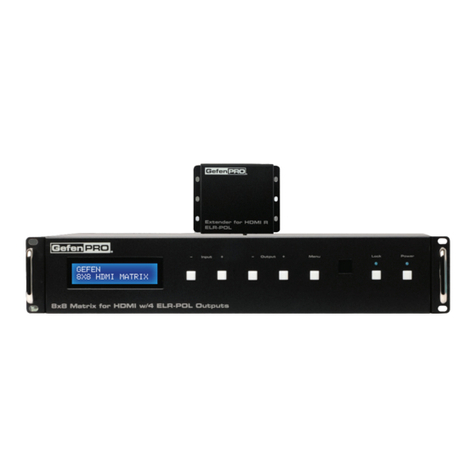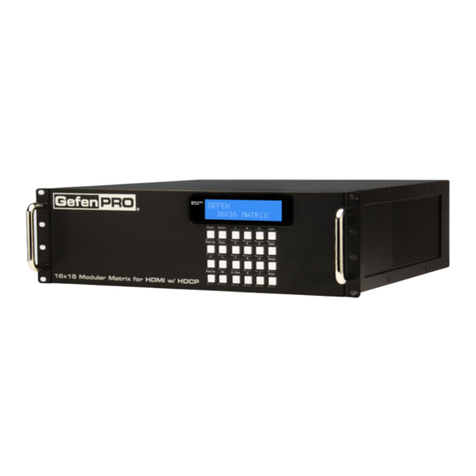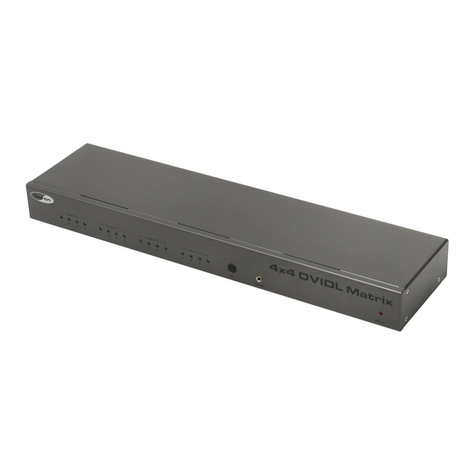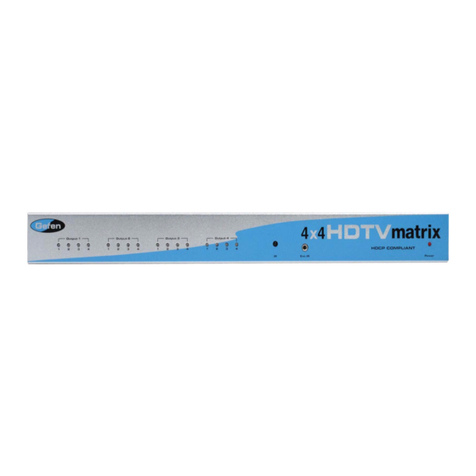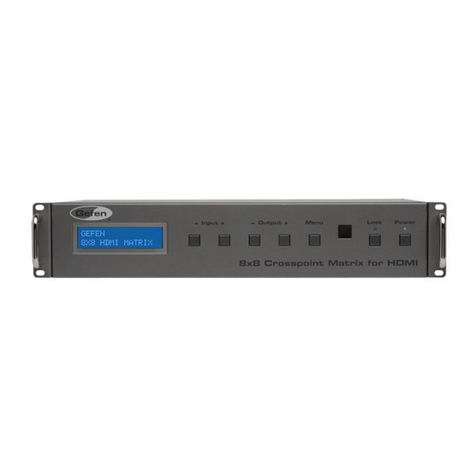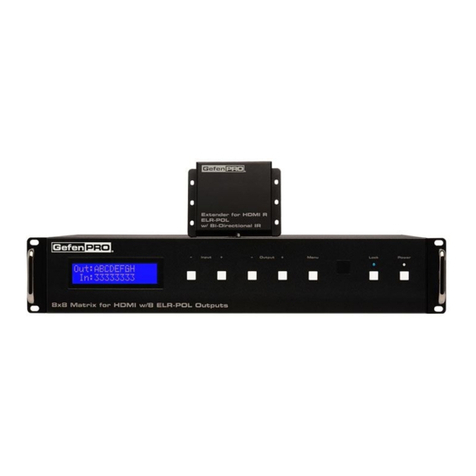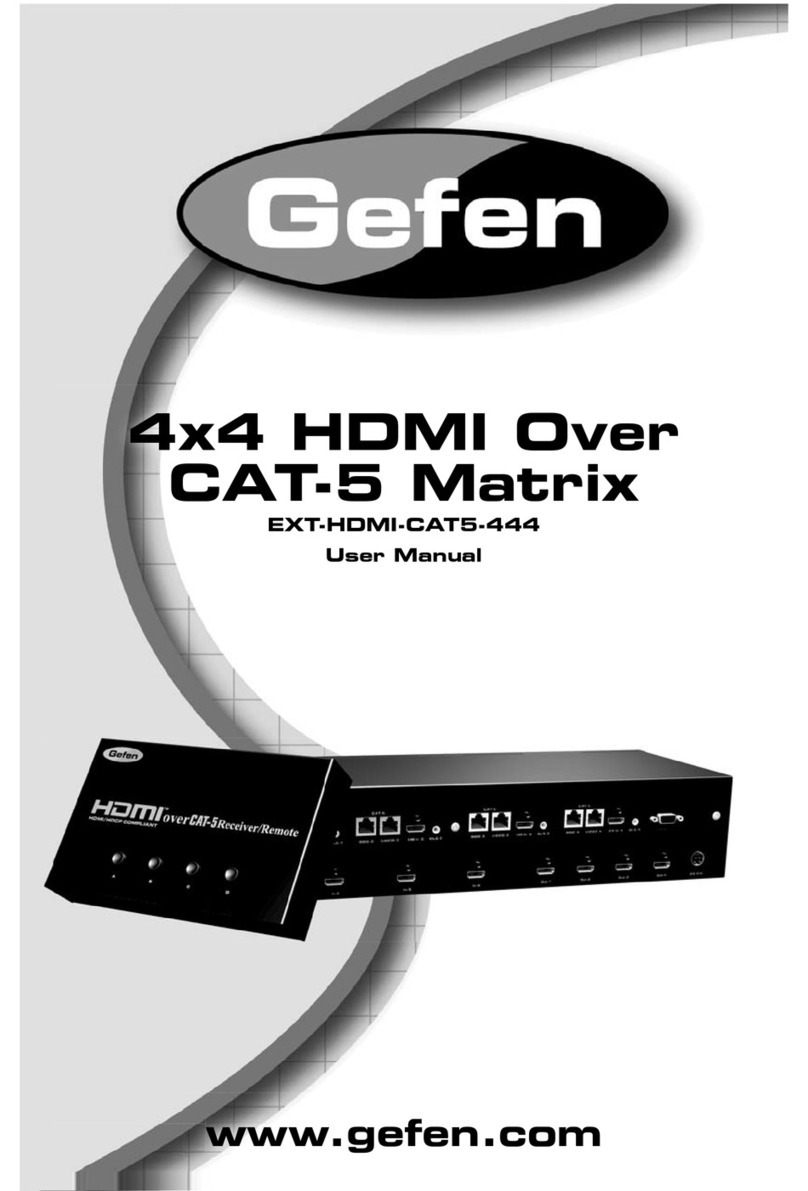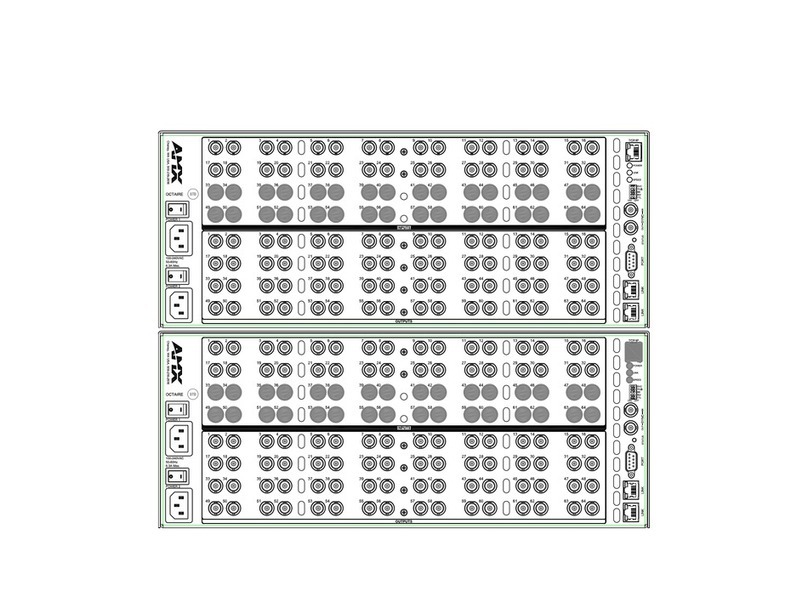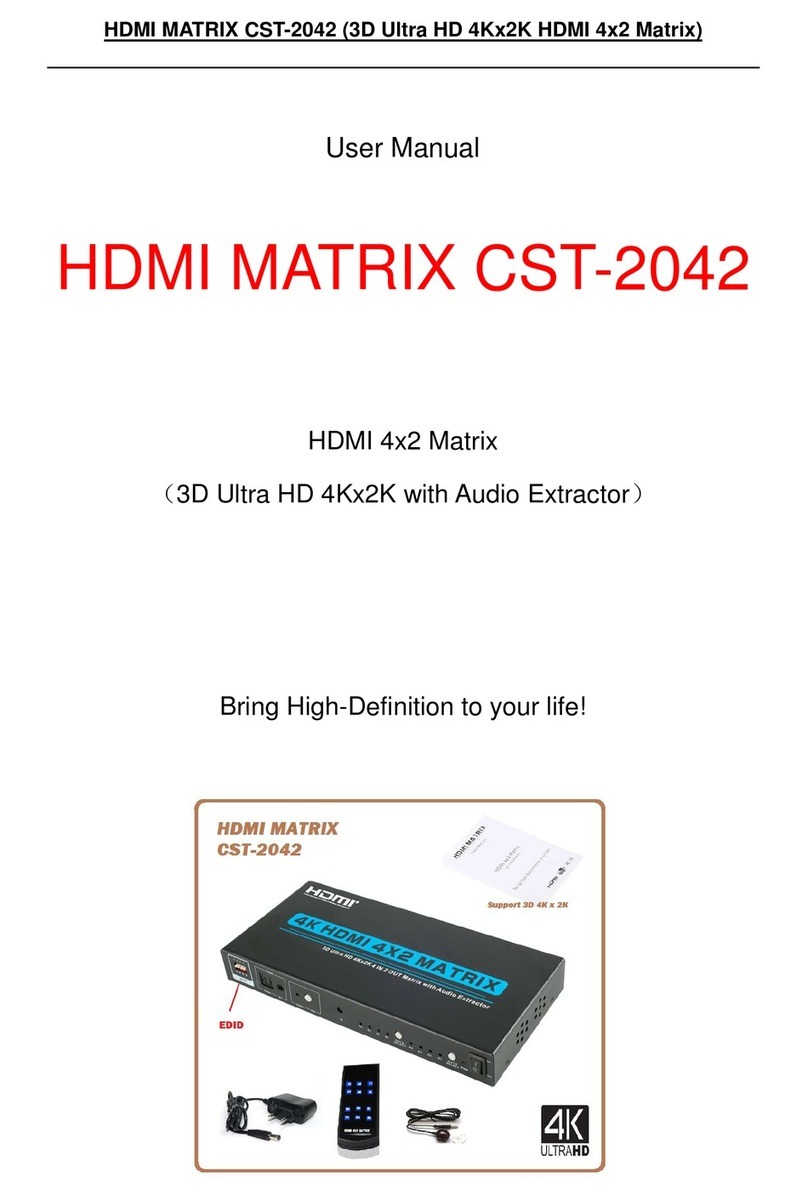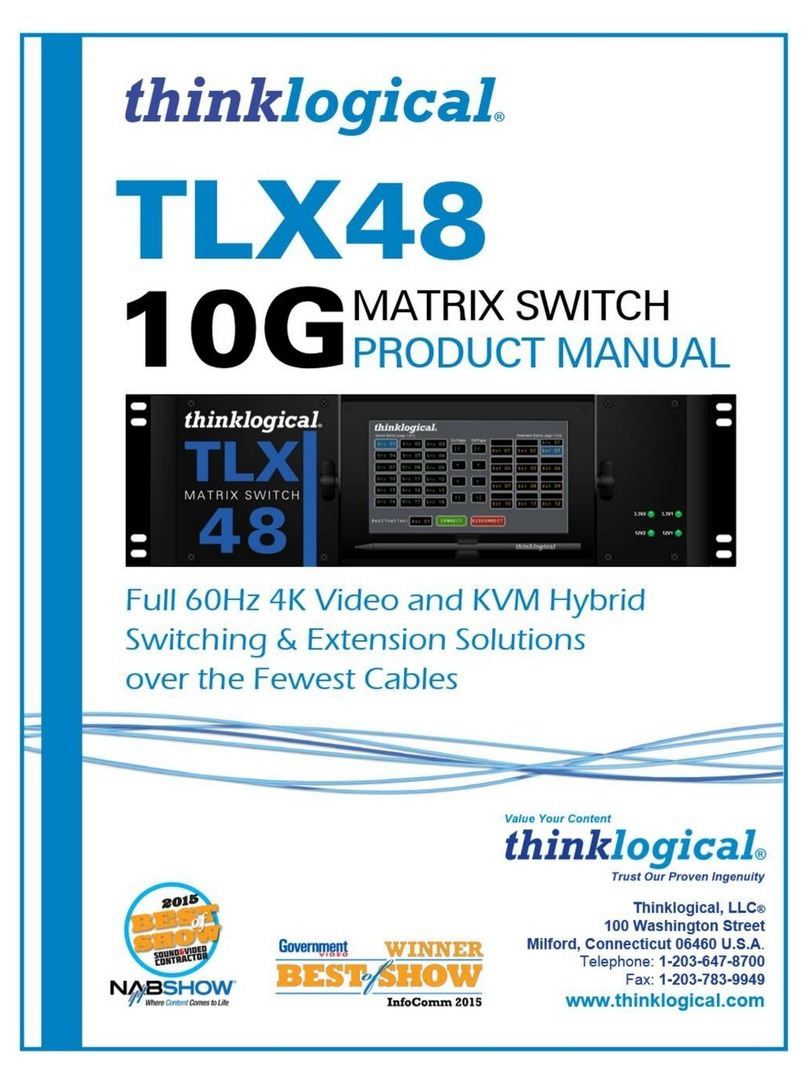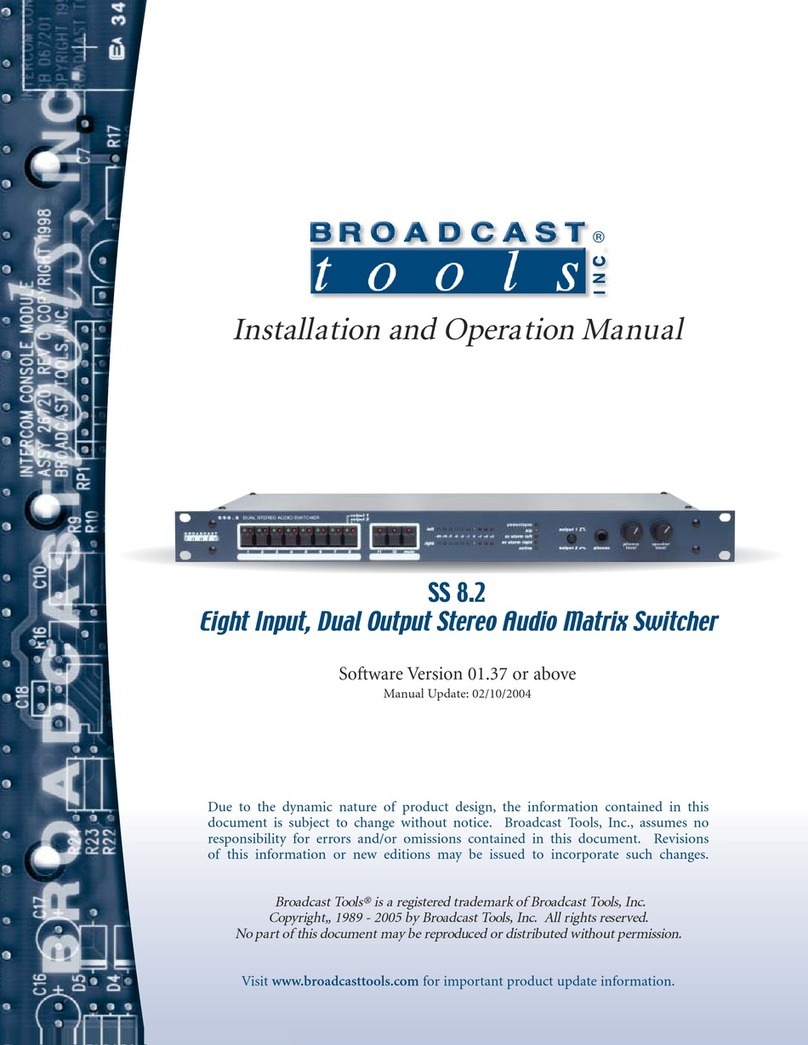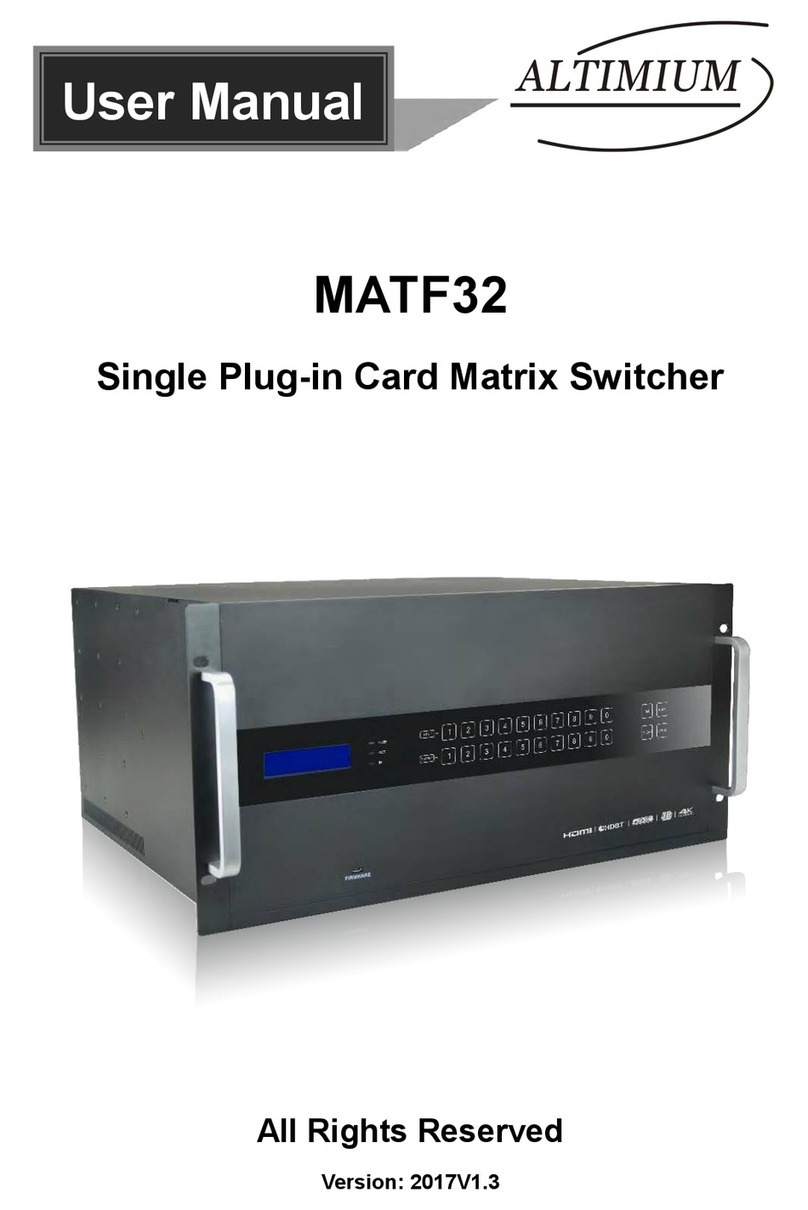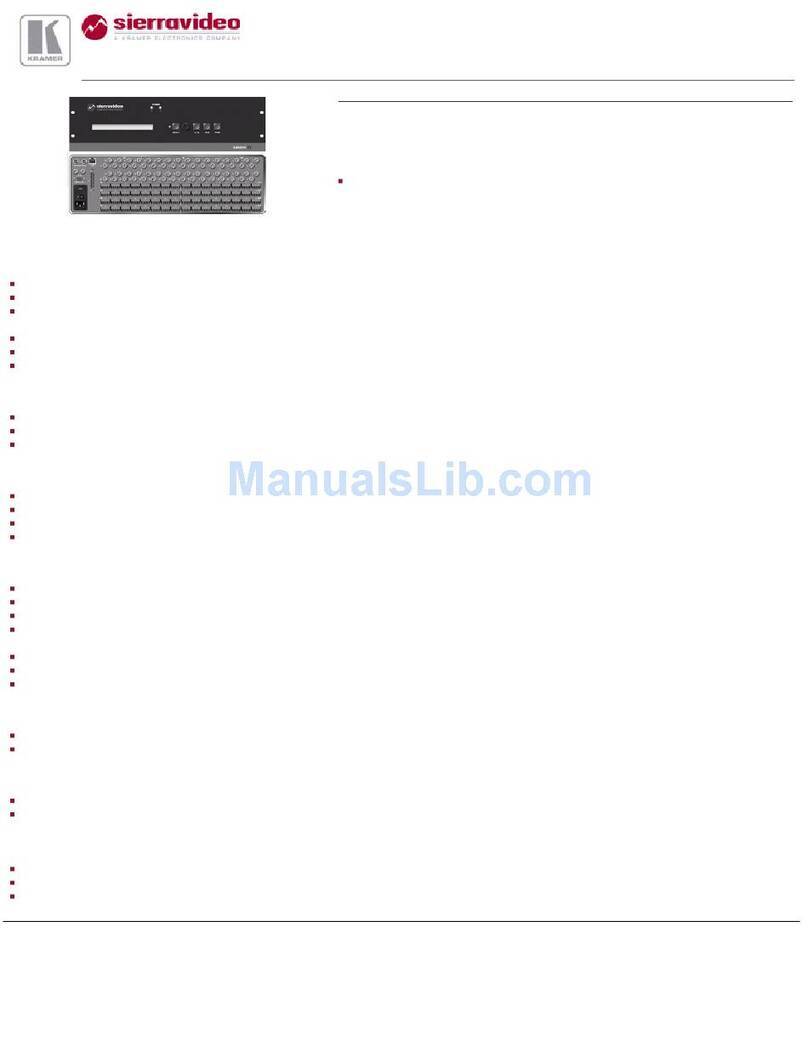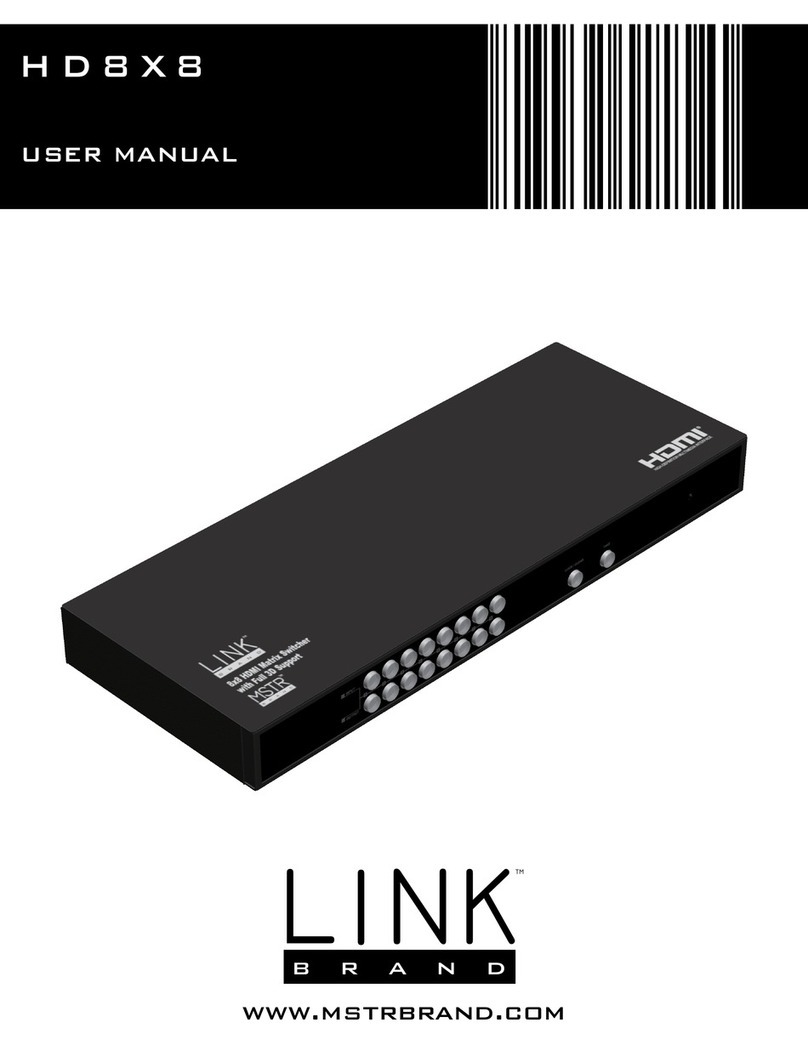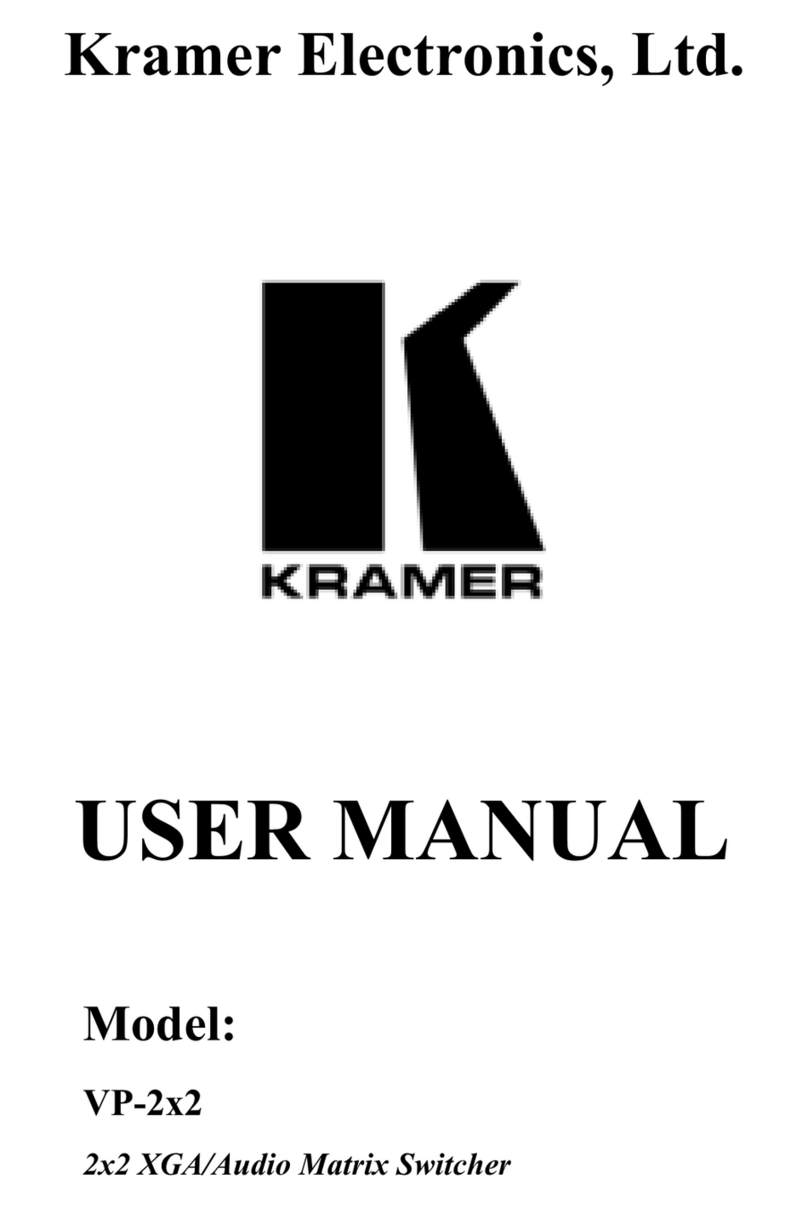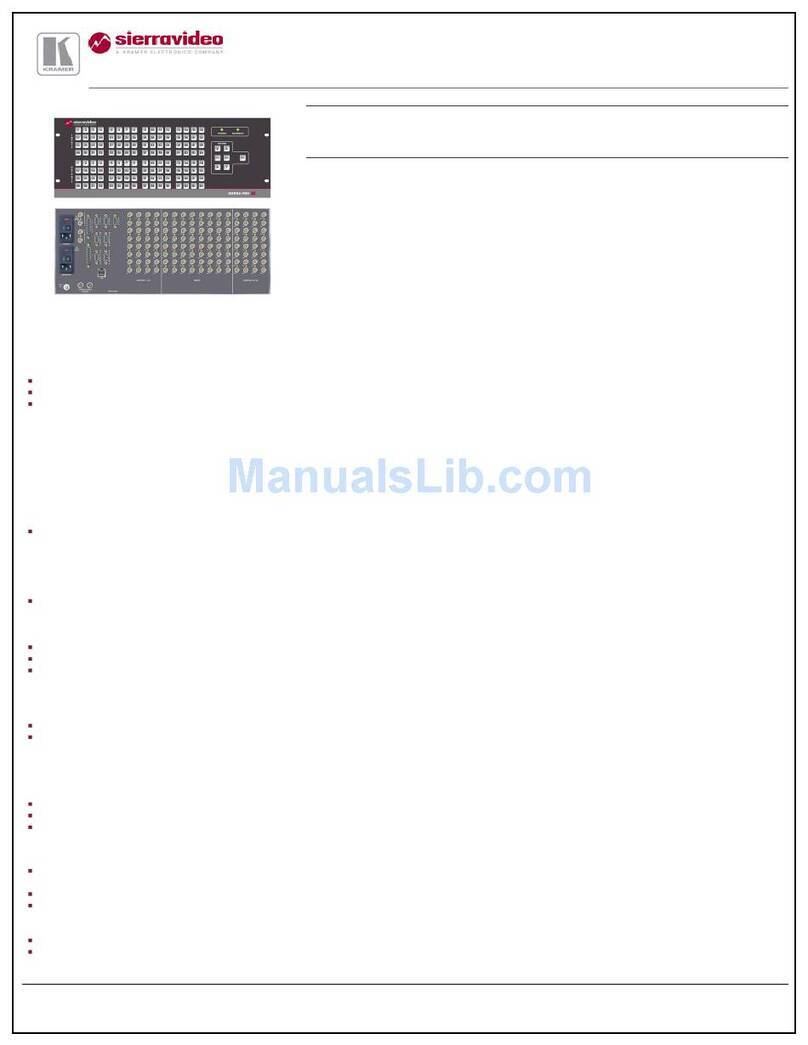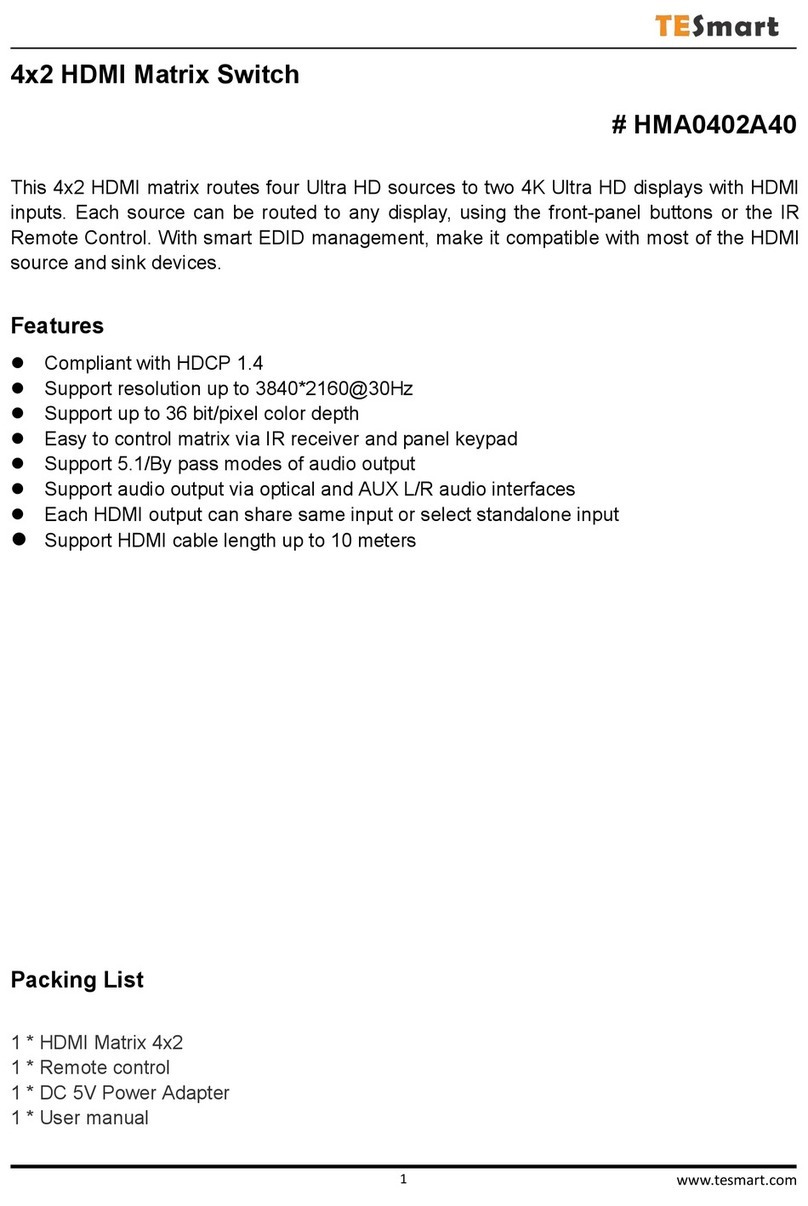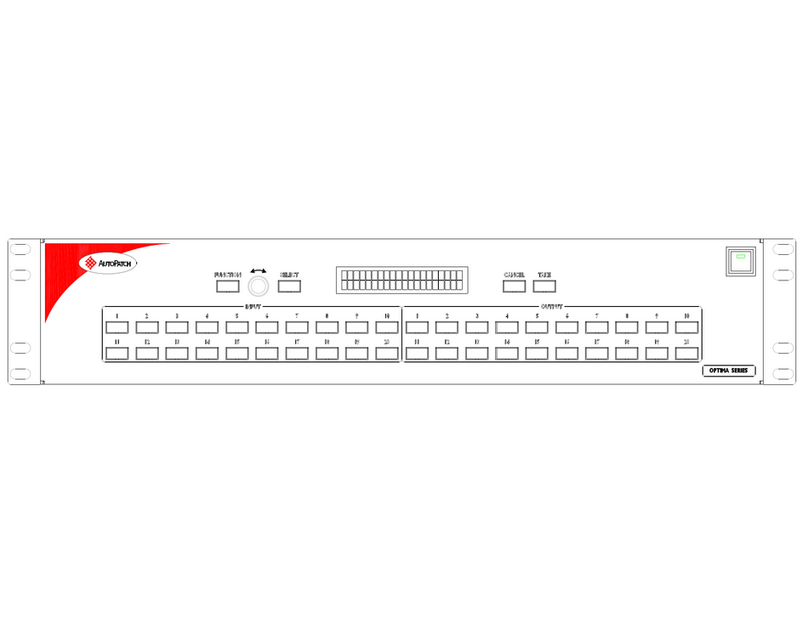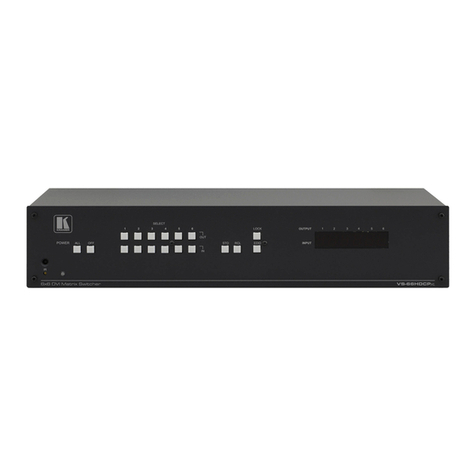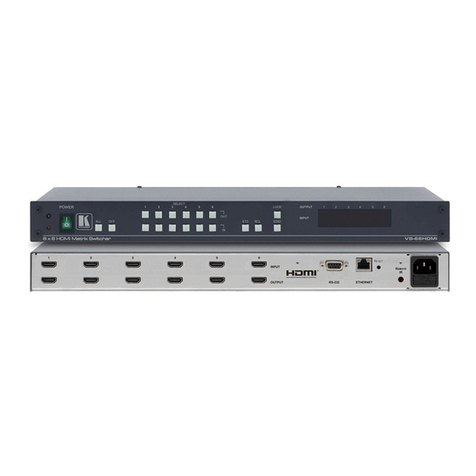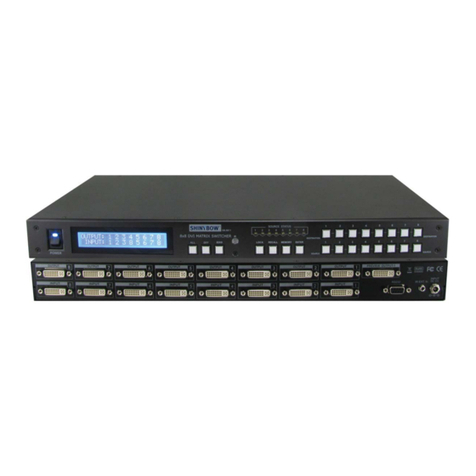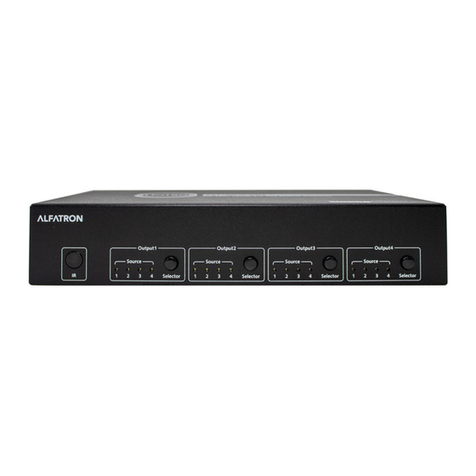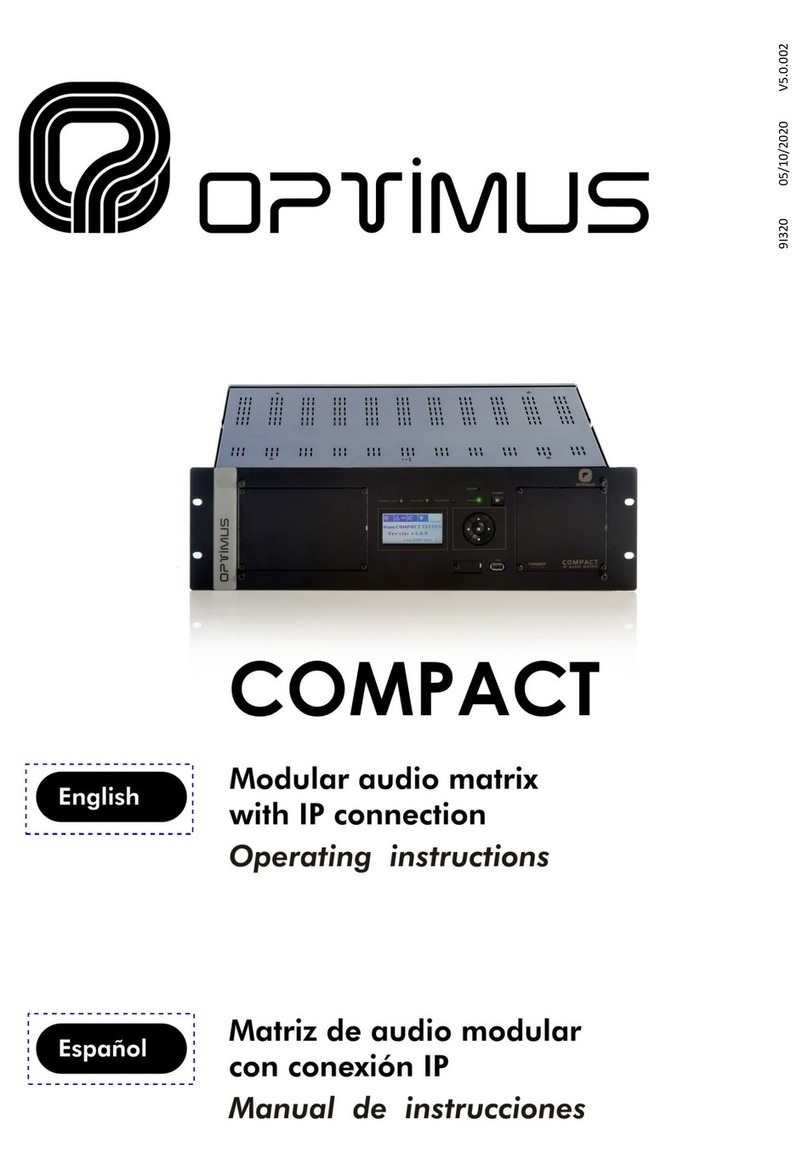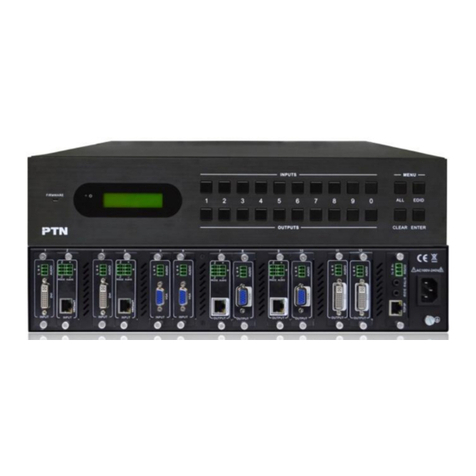7
EDID MANAGEMENT FEATURE
EDID. What is it and what is it used for?
Under normal circumstances, an source device (digital and analog) will require information
about a connected device/display to assess what resolutions and features are available.
The source can then cater its output to send only resolutions and features that are
compatible with the attached device/display. This information is called EDID (Extended
Display Information Data) and a source device can only accept and read one EDID from a
connected device/display. Likewise, the source an only output one resolution for use by a
connected device/display.
Why is EDID so important with the 4x4 Matrix for HDMI?
The 4x4 Matrix for HDMI is complex piece of technology that replicates and switches
between multiple inputs and outputs. Each connected source device will require one EDID
to read. EDID management is carefully handled by 4x4 Matrix for HDMI to provide a single
EDID for each source to read.
What options do I have to manage the EDID in the 4x4 Matrix for HDMI?
First, it is important to note that each source device can only output one video/audio signal
type. This includes resolutions and timings. When multiple devices/displays are used,
such as with the 4x4 Matrix for HDMI, it is important to use devices/displays that have
similar or compatible resolutions/features. This will ensure that the single video/audio
signal produced by the source device is accepted by all of the connected output devices/
displays.
The user has the option, through a combination of DIP switch settings within the 4x4
Matrix for HDMI, to choose how the unit will manage the EDID from multiple HDMI
devices/displays. Therefore the user has some control over the resolutions/features that
the source devices will output. The 4x4 Matrix for HDMI has a multiple EDID management
modes that will control how the EDID information from multiple devices/displays are
combined, ignored, and routed.
How do I change EDID modes in the 4x4 Matrix for HDMI?
There is an bank of 8 DIP switches located on the main-baord inside of the 4x4 Matrix for
HDMI. DIP switches 1, 2, 5, and 7 are used in different combinations to manage the EDID
modes.
TIP: EDID modes and IR code channels can also be managed via the RS-232 serial
communications port. For this to work, all DIP switches must be in the OFF position. This
is the factory default setting. If you wish to use this feature, please do not open the unit.
See page 9 and 10 for more information on the RS-232 serial communication features.
To access these DIP switches it will be required to open the unit. To do this, remove all
screws on the underside and side of the unit. Remove all HEX screws on the rear panel.
This includes the screws above each HDMI port and on each side of the RS-232 serial
communications port. Carefully slide the unit apart.
